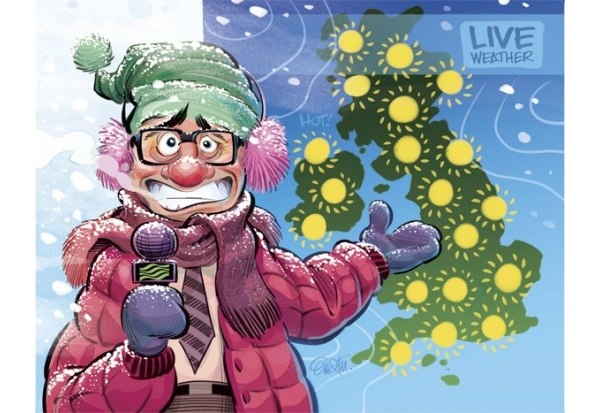So that’s it then: the Guardian has declared that we are all being scorched, drowned and blown over by climate change. The website Carbon Brief, it says, has found ‘stark evidence of how global heating is already supercharging deadly weather beyond anything ever experienced by humanity’. Never mind that humans were around to witness multiple ice ages – let’s have a look at Carbon Brief’s claim.
The report looks at 744 extreme weather events and trends measured by 617 different studies and makes the claim that in 74 per cent of cases, the event had been made more likely or more severe by anthropogenic climate change, while 9 per cent of events had been made less likely or less severe.
Problem number one is that these are not actually 744 different extreme weather events; many of them are multiple studies of the same event, some of which came to very different conclusions. Included, for example, is a drought in California between 2012 and 2014. Four studies claimed it had been made more likely by climate change, and one concluded otherwise.
Problem number two is that lots of the studies arrived at their conclusions via attempts to model the climate, present and past. In many cases, the models used produced such a wide spread of results that no reasonable person could come to any conclusion. A World Weather Attribution study of the 2022 floods in Pakistan (not quoted directly in the Carbon Brief report) ran 24 different climate models. Thirteen of them came back with the estimate that global warming had increased the intensity of the rainfall compared with if the same weather event occurred in pre-industrial times – with one model suggesting a 68 per cent increase. However, 11 of the models calculated that warmer global temperatures had decreased rainfall intensity, one of them suggesting an 18 per cent fall.
What does that tell you? That climate models aren’t good enough to be used for this kind of analysis. Indeed, the authors wrote: ‘As a conclusion, models are unable to provide a basis to confidently quantify the change in the monsoon season rainfall intensity: qualitative statements are however possible’ – although that didn’t stop the study being reported by the Guardian as claiming ‘Pakistan floods made up to 50 per cent worse by global heating’.
Many of the modelling-based studies quoted by Carbon Brief are in direct contrast to real-world data. Virtually every severe hurricane in recent years, for example, appears to have been attributed to climate change. Yet the National Oceanic and Atmospheric Administration (NOAA) – the US government body which has studied hurricanes more than anyone else – concludes that: ‘There is not strong evidence for an increase since the late 1800s in hurricanes, major hurricanes or the proportion of hurricanes that reach major hurricane intensity’.
Another study quoted by Carbon Brief attempts to blame Storm Eunice, which struck southern England in February 2022, on climate change. Yet again, the real-world data, produced in the State of the Climate Report by the Met Office and Royal Meteorological Society, tells a completely different story: it shows a clear downwards trend in extreme wind speeds measured in the UK over the past 40 years.
Some of the events quoted by Carbon Brief may well have a link to rising global temperatures. I can believe, for example, that warming over the past two centuries increased the maximum temperature measured during the 2022 summer heatwave by 2 degrees celsius – because that would be in keeping with the trend in high temperatures measured in Britain. But when modelling is giving you results that are in direct contravention of the real-world data – and where different models give you wildly different answers – you really need to be asking whether it is of any value, rather than just spouting it as evidence of what you would like to be true.








Comments